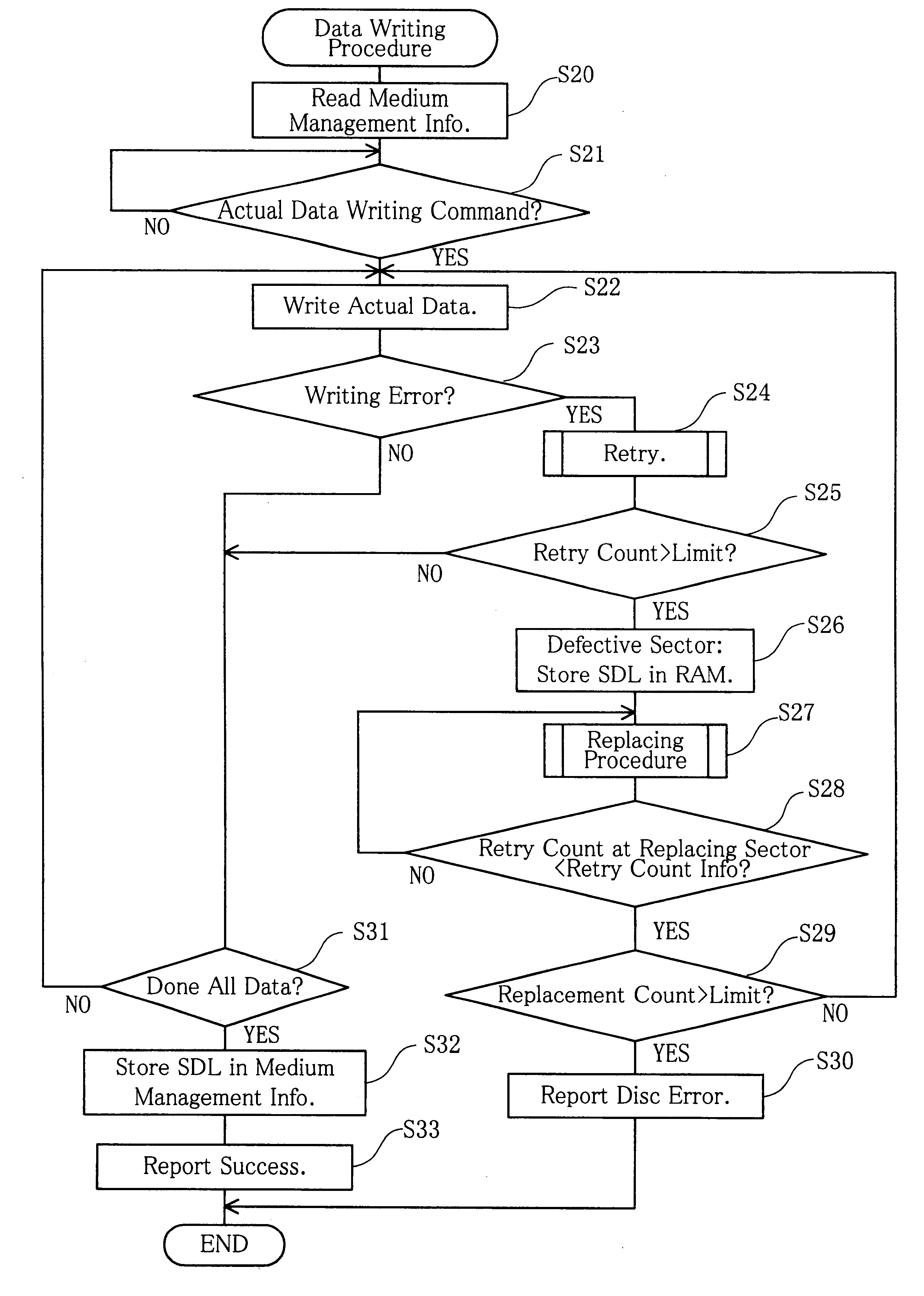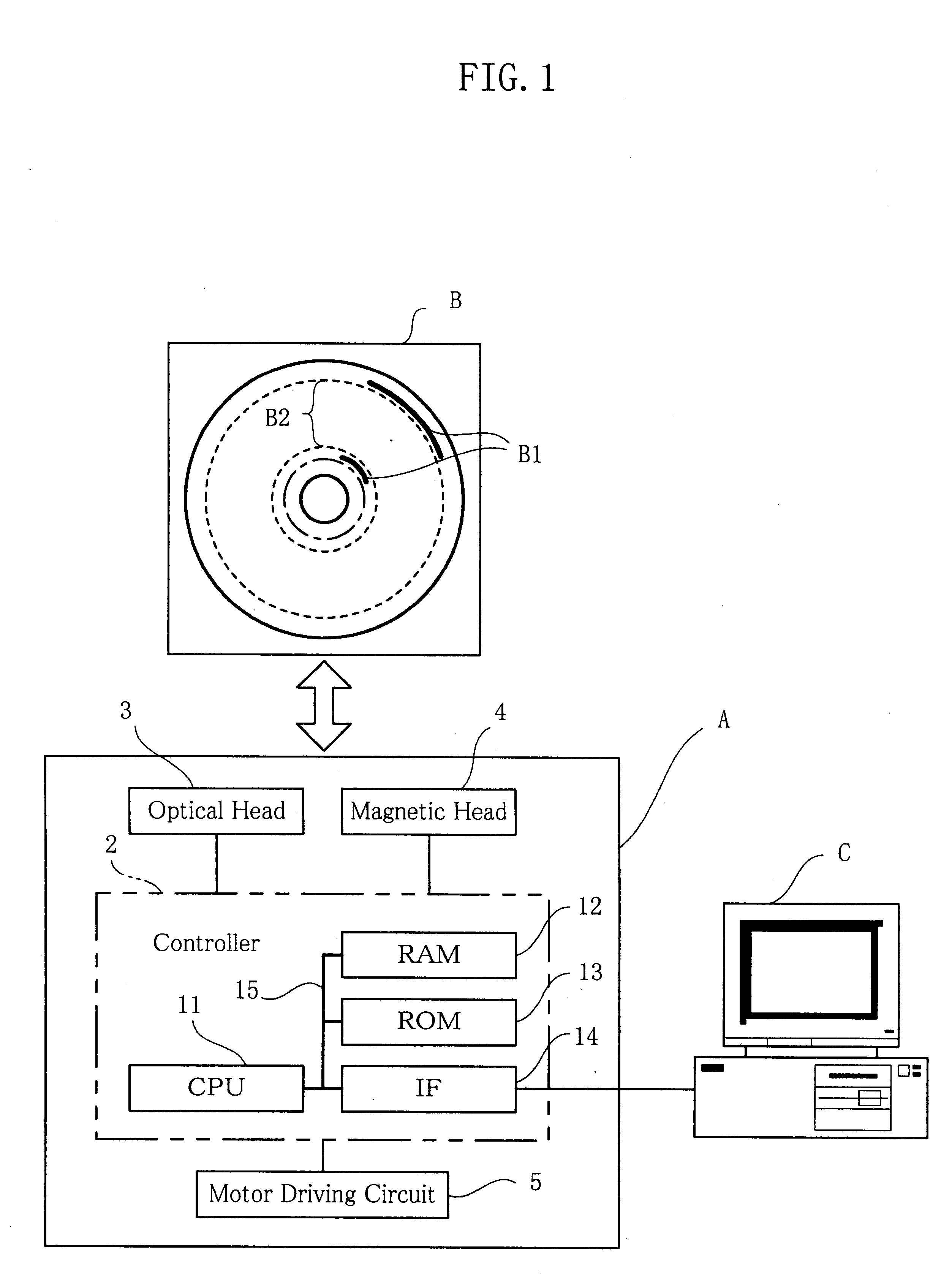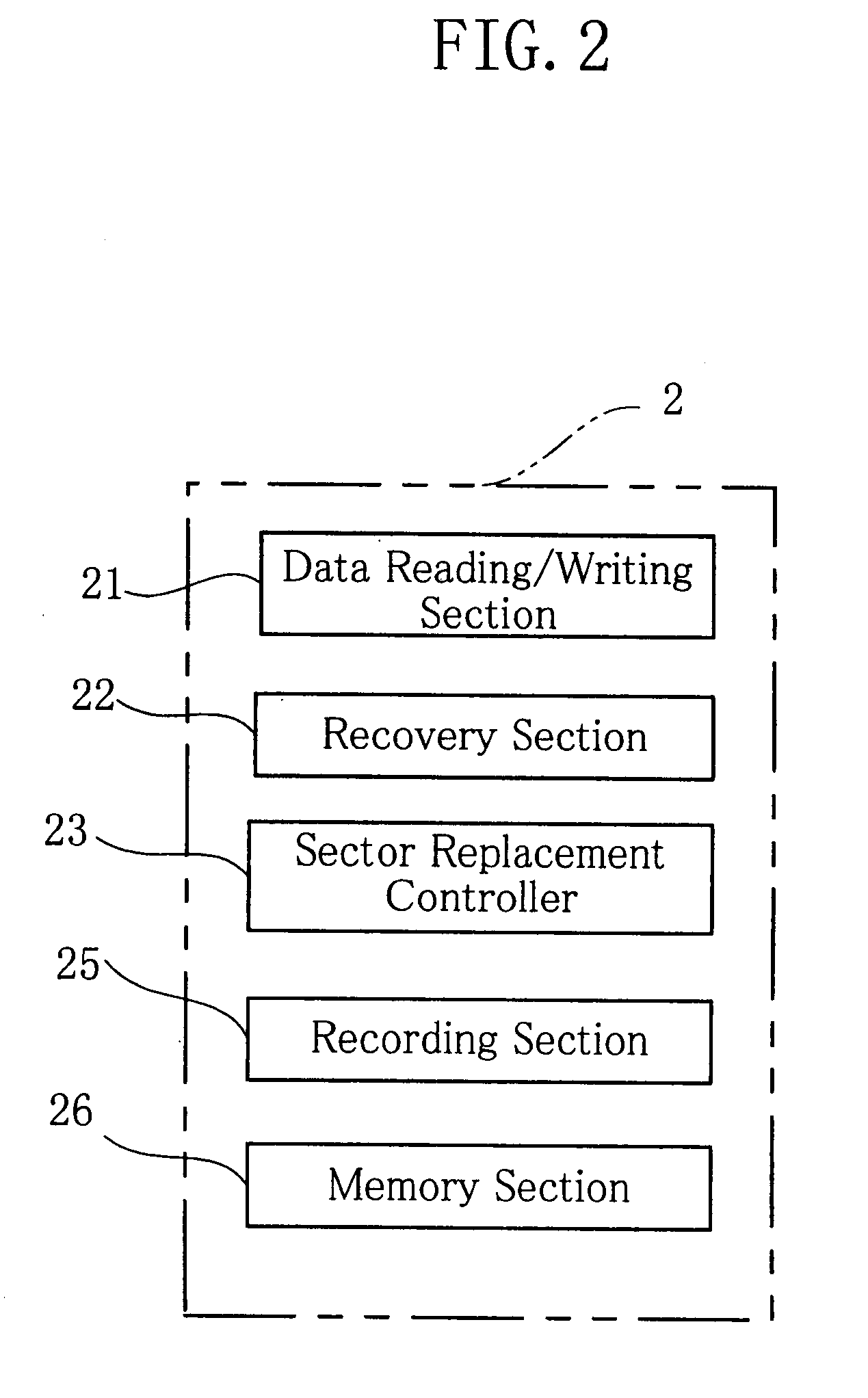Disc recording apparatus, method for replacing sector on recording disc, and recording disc
- Summary
- Abstract
- Description
- Claims
- Application Information
AI Technical Summary
Benefits of technology
Problems solved by technology
Method used
Image
Examples
first embodiment
Hereinafter, the present invention will be described with reference to FIG. 1 through FIG. 4.
As shown in FIG. 1, the first embodiment of the present invention uses, a recorder / player A as the disc recording apparatus, a magneto-optical disc B as the recording disc and a personal computer C as a host which directs reading and writing of data. As a matter of fact, the recorder / player A not only can record data and information onto the magneto-optical disc B but also can read the recorded data and information therefrom. The personal computer C, operating on the basis of an OS (Operating System) which provides file managing capabilities, does not have any new essential characteristics, and therefore will not be described or illustrated in specific details.
First, description will be made for the magneto-optical disc B. The magneto-optical disc B is provided by e.g. MO discs, of different capacities such as 230 MB, 540 MB, 640 MB, and 1.3 GB. The magneto-optical disc B has a multiple of t...
second embodiment
Next, a second embodiment will be described with reference to FIG. 1, FIG. 5 and FIG. 6. Note that flowcharts given in FIG. 5 and FIG. 6 contain same steps as in FIG. 3 or FIG. 4. These steps will be identified by the same step numbers and not be described again.
According to the second embodiment, as shown in the flowchart given in FIG. 5 and continuing to FIG. 6, the formatting procedure is followed by the actual-data writing procedure. This covers a case, for example, in which a personal computer C sends a physical formatting request and then an actual-data writing request right after the formatting is completed, without unloading a magneto-optical disc B.
A major difference from the first embodiment is that after a PDL is stored in the medium management information B1 of the magneto-optical disc B in step S18, the CPU 11 makes the RAM 12 keep the retry count information (S40), i.e. a retry count value for each restored sector which is already stored in the RAM 12, and does not cop...
third embodiment
Next, a third embodiment will be described with reference to FIG. 1, FIG. 7 and FIG. 8. Note that flowchart given in FIG. 7 contains the same steps as in FIG. 4. These steps will be identified by the same step numbers and not be described again.
According to the third embodiment, writing of actual data is accomplished through an operation which is slightly different from the operation in the first embodiment. In order to achieve the new operation, as shown in FIG. 7, the controller 2 further includes a defect register 24.
The defect register 24 is realized by the CPU 11, and performs as follows: During the steps of detecting a defective sector and then finding a replacement sector, if a candidate sector is found to have a retry count value greater than a retry count value recorded for the defective sector, the candidate sector is also registered in the RAM 12 as a defective sector.
Specifically, as shown in FIG. 8, when step S28 determines that the candidate replacement sector will req...
PUM
 Login to View More
Login to View More Abstract
Description
Claims
Application Information
 Login to View More
Login to View More - R&D
- Intellectual Property
- Life Sciences
- Materials
- Tech Scout
- Unparalleled Data Quality
- Higher Quality Content
- 60% Fewer Hallucinations
Browse by: Latest US Patents, China's latest patents, Technical Efficacy Thesaurus, Application Domain, Technology Topic, Popular Technical Reports.
© 2025 PatSnap. All rights reserved.Legal|Privacy policy|Modern Slavery Act Transparency Statement|Sitemap|About US| Contact US: help@patsnap.com



